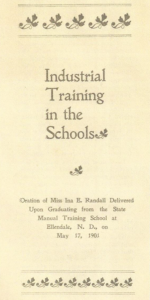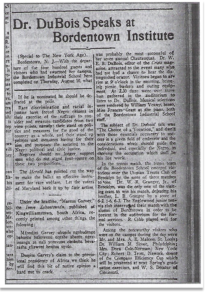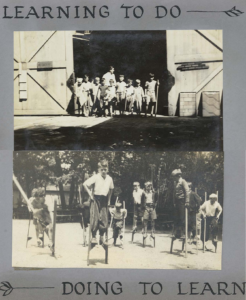A decade ago, I had an opportunity to teach at a state prison in New Jersey. Facing the men in my classes, I wondered why they were on the inside and I was free to come and go. The reasons are complex, but among them is that many had not had an opportunity to learn to make a living in ways that did not lead to trouble with the law.


Those questions led me on a journey that resulted in this book.
A decade earlier, while working on a doctorate in Chicago, I’d written a paper that used the work of Dewey’s colleague Ella Flagg Young as a means of mediating the differences between Du Bois and Washington. I also learned that when, in 1901, Dewey was put in charge of several programs at the University of Chicago, one was the Chicago Manual Training School (CMTS). Though he later became a great advocate for the kind of industrial education – that of the hand and the head together — offered at MTIS and CMTS, Dewey ignored the latter while it was under his purview.
At around the same time, I learned of a school that once existed in Bordentown, about ten miles south of where I was living in Trenton. Called the Manual Training and Industrial School (MTIS), its curriculum was a mix of ideas articulated by W.E.B. Du Bois, Booker T. Washington, and John Dewey. As a student of all three, I wondered why I’d not heard of MTIS before. Might an education such as it offered have set my students’ lives off in a more productive direction?
Why he had done so became another question addressed in this book.

I’d learned, while studying the work of Young and Dewey and others, that industrial education was suspect among many historians of education. This surprised me because as a child I frequently heard my mother praise the North Dakota Normal and Industrial School in her hometown of Ellendale. The NI had enabled her to become a bookkeeper, move to Chicago, and get a job with some promise of a future.
Significant to that future was meeting my father, who had grown up in South Dakota and come to Chicago as a young man. To support himself, he started a club for boys and girls; it’s motto: “Learning to Do and Doing to Learn.” Later, that’s how he managed our household; his lessons were augmented by the privilege of attending Crow Island, a school founded on Deweyan principles.
With such a set of influences, it’s no surprise that I was inclined to redeem the reputation of industrial education by telling the stories of CMTS, MTIS, and the NI. In doing so, I’ve put them in the context of influences that preached the gospel of head and hand, of combining an academic education with a practical one, as being the optimal way to prepare young people for lives as productive citizens.